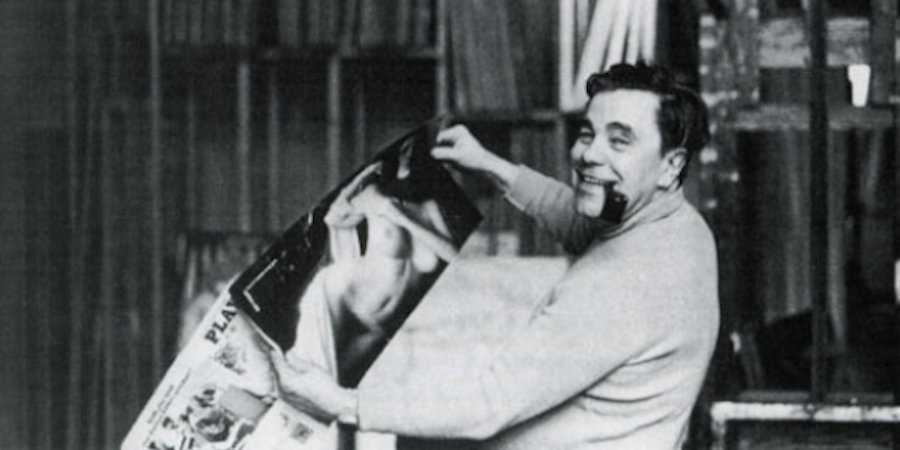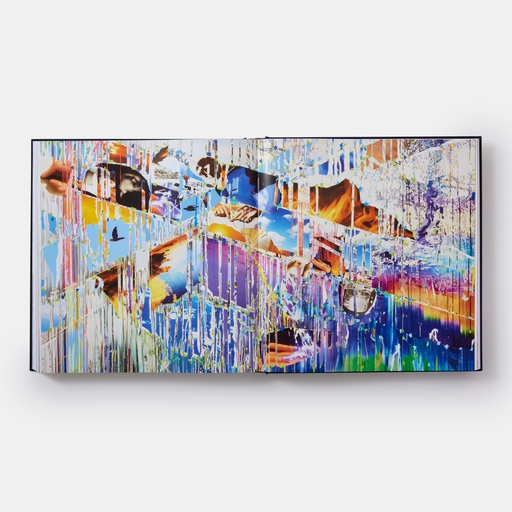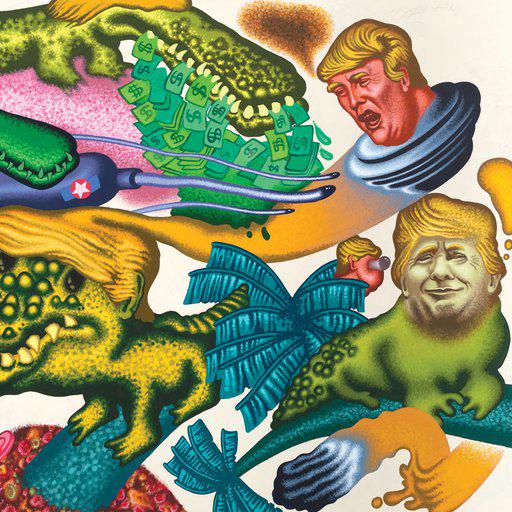In the late 1940s, Hollywood ran rampant with more surrealism than all the Surrealists could have dreamed up in a lifetime, according to the artist Man Ray—of course, the locals would have had a different term to describe the zany goings-on of Tinseltown. But the young William N. Copley, who was an exception in many ways, saw the charged climate through precisely that artistic lens. A genteel visionary who went on to make idiosyncratic, transgressive, and erotically charged paintings under the name CPLY (the artist Bjarne Melgaard recently included them in a show at Venus Over Manhattan), Copley was the adopted son of a newspaper tycoon and used his inherited fortune in 1947 to open a gallery that brought art by the reigning Surrealists to Beverley Hills.
Though Copley and his business partner (his artist brother-in-law) treated their Surrealist gallery as a lark—it was an idea hatched over the course of a whiskey-hazed night—their little bungalow on Cannon Drive brought an astonishing group of artists to the town: Marcel Duchamp, Joseph Cornell, René Magritte, and Max Ernst, to name a few. (It was Cornell's first gallery show ever.) The brief period of this unorthodox gallery's run became the substance of Copley's beguiling memoir on that period, Reflection on a Past Life, originally written in 1976, a fresh new edition of which will be published next month by the legendary Cologne art publisher Walther König. It provides an intimate, gossipy history of a formative moment in the country's art.
The story of Copley Gallery begins with Man Ray, a “vintage Surrealist” who was then living in exile in Los Angeles. After initially dismissing the tenderfoot gallerists pursuing him because they woke him at his home at an indecent hour (around noon), Man Ray later begrudgingly agreed to show with them and to provide them with an introduction to Duchamp in New York. Meeting at the Biltmore Hotel, where the father of the readymade often went “just to ride the elevators,” the duo also convinced Duchamp to sign on. In turn, that artist connected Copley to the Greek collector and dealer Alexander Iolas, who owned New York's Hugo Gallery.
It was there that a hungry-looking artist wandered in one day and “arrayed a floor full of magical toy-like boxes”: Joseph Cornell. Copley and his partner bought the boxes and took him out for a meal. Max Ernst, whom Copley considered the crowning jewel of the Surrealist crowd, also arrived by way of an introduction from Duchamp that led to the aspiring dealers visiting his remote desert house in Arizona. The procession of amusing encounters continues on, as Copley recalls his meetings with Tanguy, Calder, Magritte.
Copley Gallery also had its own cast of characters. Igor Stravinsky’s daughter-in-law was Copley's secretary, though a terrible typist. (They kept her around for no other reason than that her name was fun to bat about in conversation.) There was also a pet Capuchin monkey in the bungalow, purchased because no other gallery seemed to have one. (Copley's brother-in-law said it maybe had something to do with Commedia dell’Arte, but maybe not.) Treating the irrational with an even hand, the gallery was guided by a capering Surrealist spirit and healthy tolerance for the absurd.
So, too, was Copley. As a writer, Copley is not so much a historian as a host, jovially leading the reader by the elbow through the colorful crowd, ice cubes clinking in his glass, as we are treated to his humorous assessments of his friends—an array of outrageous and hermetic artist types—and also to a barrage of his aphorisms, which are still useful for today's art world. (Take heed, gallerists: “Artists, like mothers-in-law, are often better appreciated when a certain geographical distance is maintained.” Also, don’t allow artists to hang their own shows, since “they are too close to their own creative agony.”)
Copley’s sketches are loving: Magritte “worked with the efficiency of a dentist," and Ernst inhabited “a landscape [Arizona] that Max had painted before he ever saw it.” We quickly forgive his careless disregard for the hard-and-dry facts of the period (the aftermath of World War II, the tragedy of the refugee artists' displacement, the larger political significance of the Surrealist movement). Indeed, we can almost bear his self-confessed "chauvinistic" attitude, in which women who balked at being objectified are depicted as being spoilsports to the men's fun. (He chides his own wife for angering at Magritte’s groping hands—“But you don't understand,” Copley explains, "he's Magritte.")
For all his joie de vivre, Copley, it turned out, was not much of a businessman. With avant-garde collectors thin on the ground in Hollywood, Copley Gallery hardly sold anything, leading him to sometimes give artworks away for free. The gallery's doors were sealed after a six-month run, and so concluded an audacious experiment in the history of art.
In the years after the closing, Copley would go on to amass a hoard of Surrealist art and auction it in 1979 for what was then the highest price of a single person’s collection in the United States. But even without knowing this delightful twist, there is nothing very lamentable in Copley Gallery's flop. Like the memoir, the gallery light-heartedly marks what Copley calls “our youth and lunacy and our homage.”
























